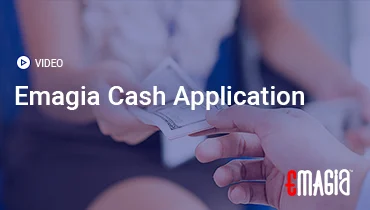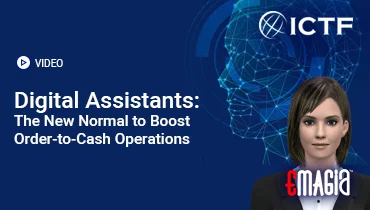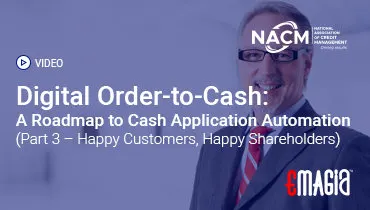In the complex and often volatile world of investments, managing risk is paramount. Whether you’re an individual investor, a hedge fund manager, or a corporate treasury department, the goal is not merely to maximize returns, but to achieve the best possible returns relative to the level of risk taken. A portfolio, by its very nature, is a collection of diverse assets, each carrying its own set of uncertainties. Understanding, measuring, and mitigating these collective uncertainties is the essence of effective portfolio risk management.
Traditionally, portfolio risk analysis involved complex manual calculations, fragmented spreadsheets, and a reactive approach to market shifts. But in an era defined by rapid technological advancements, interconnected global markets, and escalating regulatory scrutiny, this fragmented approach is simply no longer sustainable. The imperative for real-time visibility, comprehensive control, and proactive mitigation of risks has never been more pressing. This demand is driving the widespread adoption of sophisticated Portfolio Risk Software—integrated technological solutions designed to intelligentize and streamline every aspect of risk oversight for investment portfolios.
This comprehensive guide will delve deep into the world of Portfolio Risk Software, exploring its definition, core components, and the immense benefits it delivers. We will uncover how it leverages cutting-edge technology, including advanced analytics and Artificial Intelligence, to transform risk management from a reactive burden into a strategic value driver, empowering investors and financial institutions to navigate complexity with confidence and optimize their risk-adjusted returns. Join us as we illuminate how this integrated solution is not just changing the game, but redefining the very essence of modern investment risk management.
I. Understanding Portfolio Risk: The Multifaceted Landscape of Investment Uncertainty
Before diving into the software, it’s vital to understand the diverse types of risks that can impact an investment portfolio.
Defining Portfolio Risk: Beyond Individual Asset Volatility
Portfolio risk refers to the overall risk associated with an entire collection of investments, rather than just the risk of individual assets within that portfolio. It considers how different assets interact with each other (correlation) and how their combined performance is affected by various market and economic factors. The goal of portfolio risk management is to understand and control this aggregated risk.
Key Types of Risks Impacting Investment Portfolios
Investment portfolios are exposed to various categories of risk:
- Market Risk (Systematic Risk): The risk of losses due to factors affecting the overall market, such as economic recessions, geopolitical events, or changes in interest rates. This is often analyzed using market risk analysis software.
- Credit Risk: The risk that a borrower (e.g., bond issuer, counterparty in a derivative trade) will default on their obligations. This is managed with credit risk management software.
- Liquidity Risk: The risk that an asset cannot be bought or sold quickly enough in the market without substantially affecting its price.
- Operational Risk: The risk of losses resulting from inadequate or failed internal processes, people, and systems, or from external events (e.g., system failures, human error in trading).
- Concentration Risk: The risk arising from having too much exposure to a single asset, industry, geography, or counterparty.
- Interest Rate Risk: The risk that changes in interest rates will adversely affect the value of fixed-income securities.
- Foreign Exchange (FX) Risk: The risk of losses due to fluctuations in currency exchange rates, especially for portfolios with international assets.
- Inflation Risk: The risk that inflation will erode the purchasing power of investment returns.
Managing these diverse risks requires sophisticated tools, often found in financial risk management software.
The Challenges of Manual Portfolio Risk Management
Traditional approaches to portfolio risk management often suffer from:
- Data Fragmentation: Investment data scattered across multiple systems, spreadsheets, and data providers.
- Lack of Real-time Insights: Manual data aggregation and analysis mean risk assessments are often backward-looking and reactive.
- Complexity of Calculations: Measuring aggregated risk (e.g., VaR, stress testing) involves complex statistical models that are difficult to execute manually.
- Human Error: Manual data entry and calculations are prone to mistakes, leading to inaccurate risk assessments.
- Inefficient Reporting: Generating comprehensive risk reports for internal stakeholders and regulators is time-consuming.
- Limited Scenario Analysis: Difficulty in quickly modeling the impact of various market events on the portfolio.
These investment risk challenges highlight the urgent need for automated solutions.
II. What is Portfolio Risk Software? Defining the Integrated Solution
Portfolio Risk Software represents a paradigm shift, moving from fragmented tools to a centralized, intelligent, and automated approach to managing investment risk.
Definition: A Comprehensive Platform for Investment Risk Oversight
Portfolio Risk Software is a specialized, integrated software platform designed to identify, measure, monitor, and mitigate various risks across an investment portfolio. It provides a unified framework for risk governance, enabling portfolio managers, risk analysts, and investors to gain real-time insights into their risk exposures, optimize asset allocation, and make more informed investment decisions. It’s the ultimate risk management solution for investment professionals.
Evolution from Basic Analytics to Advanced Predictive Models
Early versions of risk software focused on basic statistical analysis. Modern Portfolio Risk Software has evolved significantly, incorporating advanced analytical techniques, Artificial Intelligence (AI), and Machine Learning (ML) to provide predictive insights, automate complex calculations, and handle vast amounts of data. This evolution has transformed it into a powerful risk analysis software.
Core Purpose: Optimizing Risk-Adjusted Returns and Ensuring Compliance
The primary purpose of Portfolio Risk Software is to:
- Optimize Risk-Adjusted Returns: Help investors make decisions that maximize returns for a given level of risk, or minimize risk for a target return.
- Enhance Decision-Making: Provide data-driven, proactive insights into portfolio vulnerabilities and opportunities.
- Ensure Regulatory Compliance: Automate reporting and provide audit trails to meet stringent financial regulations.
- Improve Operational Efficiency: Streamline risk processes, reducing manual effort and costs.
- Strengthen Resilience: Build a more robust portfolio capable of withstanding market shocks.
This makes it an indispensable financial risk software for modern investment management.
III. Key Features and Capabilities of Leading Portfolio Risk Software
A truly impactful Portfolio Risk Software integrates a range of advanced functionalities across various risk domains.
A. Comprehensive Market Risk Analysis Software
Understanding and measuring exposure to market movements is fundamental:
- Value at Risk (VaR) Calculation: Calculates the maximum potential loss a portfolio could incur over a specific time horizon at a given confidence level. This is a core function of VaR calculation software.
- Stress Testing Software: Simulates the impact of extreme but plausible market scenarios (e.g., a financial crisis, sudden interest rate hike) on portfolio value.
- Scenario Analysis: Allows users to define custom scenarios and analyze their impact on the portfolio.
- Sensitivity Analysis: Measures how portfolio value changes in response to small changes in market variables (e.g., interest rates, exchange rates).
- Factor Analysis: Identifies the underlying market factors (e.g., equity, bond, currency factors) that drive portfolio risk and returns.
These features are central to robust risk modeling software.
B. Advanced Credit Risk Management Software
Assessing and mitigating default risk across fixed income and counterparties:
- Counterparty Risk Assessment: Evaluates the creditworthiness of entities with whom the portfolio trades.
- Credit Exposure Measurement: Calculates potential future exposure to credit risk from various instruments.
- Default Probability Models: Leverages statistical models and potentially AI to predict the likelihood of default for bonds or other credit instruments.
- Credit Value Adjustment (CVA) Calculation: Measures the market value of counterparty credit risk.
- Concentration Risk Monitoring: Identifies and monitors excessive exposure to any single issuer or sector.
This is a critical component of comprehensive financial risk management software.
C. Liquidity Risk Management
Ensuring the portfolio can meet its obligations without significant loss:
- Liquidity Stress Testing: Simulates scenarios where market liquidity dries up and assesses the portfolio’s ability to meet outflows.
- Funding Risk Analysis: Evaluates the risk of being unable to obtain necessary funding.
- Cash Flow Forecasting for Investments: Predicts cash inflows and outflows from investment activities.
D. Operational Risk Management
Addressing risks from internal processes and systems:
- Incident Management: Tracking and analysis of operational loss events within the investment process.
- Process Mapping: Identifying and assessing risks within trading, settlement, and reporting workflows.
- Key Risk Indicators (KRIs) Monitoring: Tracking metrics that provide early warnings of increasing operational risk.
This often involves features found in operational risk management software.
E. Performance Attribution and Optimization
Linking risk to return and optimizing portfolio structure:
- Risk-Adjusted Performance Metrics: Calculates metrics like Sharpe Ratio, Sortino Ratio, and Treynor Ratio to evaluate returns relative to risk.
- Performance Attribution: Decomposes portfolio returns to identify the sources of alpha and beta, and the impact of various risk factors.
- Portfolio Optimization: Uses mathematical algorithms to construct portfolios that maximize expected returns for a given level of risk, or minimize risk for a target return, considering various constraints.
This is where risk management analytics software provides actionable insights.
F. Data Management & Analytics (AI/ML Powered)
The intelligence layer that underpins all risk management:
- Real-time Data Aggregation: Pulling data from disparate internal systems (trading platforms, accounting systems) and external sources (market data providers, news feeds).
- Predictive Analytics: Using AI and ML to forecast future risk events or market movements based on historical patterns and current data. This is crucial for risk analysis software.
- Anomaly Detection: AI algorithms identify unusual patterns or outliers in data that could signal emerging risks or fraudulent activities.
- AI-Driven Insights: Generating actionable insights from vast datasets, allowing risk managers to identify hidden correlations and trends. This powers real time risk solutions and risk monitoring platform capabilities.
These risk management software solutions are increasingly powered by AI.
G. Regulatory Compliance & Reporting
Ensuring adherence to complex financial regulations:
- Automated Regulatory Reporting: Generating reports for regulators (e.g., Basel, Solvency II, MiFID II) in required formats.
- Compliance Dashboards: Providing real-time views of compliance status and flagging potential breaches.
- Audit Trails: Maintaining comprehensive records of all risk management activities for audit purposes.
This is where enterprise compliance software plays a vital role.
IV. Transformative Benefits of a Leading Portfolio Risk Software
Implementing a comprehensive Portfolio Risk Software delivers a compelling array of advantages that directly impact investment performance and strategic oversight.
1. Enhanced Risk Visibility and Control
The most immediate benefit is a single, holistic, and real-time view of all risk exposures across the entire investment portfolio. This eliminates blind spots, breaks down silos, and provides unprecedented control over the portfolio’s risk profile. This is the essence of a robust risk management system.
2. Improved Decision-Making and Strategic Planning
With accurate, timely data and predictive insights from risk management analytics software, portfolio managers and investors can make faster, more informed, and higher-quality decisions regarding asset allocation, hedging strategies, and investment selection. This shifts the approach from reactive to proactive risk management, leading to better risk-adjusted returns.
3. Superior Regulatory Compliance and Audit Readiness
The software automates complex regulatory reporting, maintains robust audit trails, and provides real-time compliance dashboards. This significantly reduces the burden of compliance, minimizes the risk of penalties, and simplifies internal and external audits. It’s a key benefit of a well-implemented risk management solution.
4. Increased Operational Efficiency and Cost Reduction
Automating manual tasks across risk identification, assessment, monitoring, and reporting reduces labor costs, minimizes human error, and frees up risk professionals for more strategic, value-added activities like developing new risk models or exploring complex hedging strategies. This leads to substantial risk management operational efficiency.
5. Greater Resilience and Stability
By enabling proactive identification and mitigation of risks, the software helps portfolios build greater resilience to financial shocks, market volatility, and operational disruptions, ensuring long-term stability and capital preservation. This is the goal of effective risk mitigation software.
6. Competitive Advantage
Organizations with superior risk management capabilities can make more informed investment decisions, leading to better risk-adjusted returns. Their enhanced agility allows them to respond faster to market opportunities while maintaining a controlled risk profile, providing a significant competitive edge in the investment landscape.
V. Choosing the Right Portfolio Risk Software: Key Considerations
Selecting the ideal Portfolio Risk Software requires careful evaluation to ensure it aligns with your institution’s specific needs, investment strategy, and regulatory environment.
1. Comprehensive Functionality and Integration
Evaluate if the software offers all the modules (market, credit, liquidity, operational risk, performance attribution) your investment strategy requires. Crucially, ensure seamless, API-driven integration with your existing trading platforms, order management systems, accounting systems, and market data providers. Look for best integrated risk management software.
2. Scalability and Flexibility
Choose a platform that can grow with your portfolio’s size and complexity, supporting increasing asset classes, transaction volumes, and global expansion. It should be highly configurable to adapt to your unique risk frameworks, methodologies, and evolving regulatory requirements. This is key for a robust risk management system software.
3. Advanced Analytics and AI Capabilities
Prioritize solutions that leverage AI and Machine Learning for predictive analytics (e.g., default prediction, market forecasting), anomaly detection, and intelligent insights. These risk management analytics software capabilities are essential for proactive risk management. Look for exclusive risk management tools that go beyond basic reporting.
4. Data Management and Quality
The effectiveness of any risk software hinges on data quality. Assess the software’s ability to ingest, cleanse, and validate data from diverse sources. Robust enterprise data risk management capabilities are crucial.
5. Regulatory Compliance and Reporting Features
Given the sensitive nature of financial data and stringent regulations, robust security measures (encryption, multi-factor authentication) and a strong track record of compliance with relevant financial regulations (e.g., Basel, Solvency II, MiFID II) are paramount. Ensure the software provides comprehensive audit trails and automated regulatory reporting. This is vital for risk management software banking or any regulated investment entity.
6. User Experience (UI/UX) and Customization
The software should be intuitive and easy for your portfolio managers, risk analysts, and traders to use, minimizing the learning curve and maximizing adoption. Look for customizable dashboards, clear visualizations, and flexible reporting capabilities to present risk data effectively. This includes user-friendly risk assessment software and risk management apps.
7. Vendor Reputation and Support
Choose a vendor with a proven track record in the financial services and investment management industry, strong customer support, and a commitment to continuous innovation in the portfolio risk management space. Look for industry recognition and positive client testimonials for best portfolio risk software.
Emagia: Enhancing Financial Resilience Through Intelligent Finance Operations
While Emagia’s core expertise lies in revolutionizing Accounts Receivable and Order-to-Cash processes through AI-powered autonomous finance, its underlying technology and approach to intelligent automation are highly relevant to and indirectly support a broader financial institution’s or corporation’s portfolio risk management framework. Emagia’s platform is built on a foundation of AI and Machine Learning that directly addresses key components often found within a comprehensive Portfolio Risk Software by providing cleaner, more accurate, and more predictable financial data.
For instance, Emagia’s AI-powered Credit Management solution (GiaCREDIT) provides real-time credit risk assessment for a company’s corporate clients, offering predictive insights into payment behavior and potential defaults. This directly contributes to a financial institution’s ability to manage its credit risk management software effectively by providing granular, AI-driven data on customer creditworthiness—a critical input for assessing the credit risk component within a broader investment portfolio (e.g., in a bank’s loan book or a corporate bond portfolio). Furthermore, Emagia’s Intelligent Cash Application (GiaCASH) and Collections (GiaCOLLECT) solutions enhance operational efficiency and reduce fraud risk within the payment lifecycle, thereby contributing to a company’s overall operational risk management software efforts. By ensuring cleaner data, more accurate cash flow forecasts, and proactive identification of payment anomalies, Emagia indirectly but powerfully enhances the overall effectiveness of a company’s risk management program, providing a stronger foundation for risk monitoring solutions and overall financial stability, which is crucial for managing any investment portfolio. Emagia empowers businesses to achieve greater financial autonomy, which inherently strengthens their ability to manage and mitigate risks across their financial ecosystem.
Frequently Asked Questions (FAQs) About Portfolio Risk Software
What is Portfolio Risk Software?
Portfolio Risk Software is a specialized, integrated software platform designed to identify, measure, monitor, and mitigate various risks across an investment portfolio, providing a unified framework for risk governance and enabling more informed investment decisions.
How does Portfolio Risk Software help in investment decision-making?
Portfolio Risk Software helps by providing real-time visibility into risk exposures, enabling stress testing software and scenario analysis to assess potential impacts, and offering performance attribution and optimization tools to help investors make data-driven decisions that balance risk and return.
What types of risks does Portfolio Risk Software manage?
Portfolio Risk Software manages various risks including market risk, credit risk, liquidity risk, operational risk, concentration risk, interest rate risk, and foreign exchange risk. It often includes modules for market risk analysis software and credit risk management software.
What is VaR calculation software and its importance?
VaR (Value at Risk) calculation software measures the maximum potential loss a portfolio could incur over a specific time horizon at a given confidence level. It’s important because it provides a single, quantifiable measure of market risk, aiding in risk limits setting and capital allocation.
Can Portfolio Risk Software integrate with existing trading platforms?
Yes, leading Portfolio Risk Software solutions are designed for seamless, API-driven integration with existing trading platforms, order management systems, accounting systems, and market data providers to ensure real-time data flow and comprehensive risk analysis.
What is the role of AI and Machine Learning in Portfolio Risk Software?
AI and Machine Learning in Portfolio Risk Software enable predictive analytics (e.g., forecasting market movements, default probabilities), anomaly detection (for unusual trading patterns), and intelligent insights from vast datasets, leading to more accurate risk assessments and proactive mitigation strategies. This powers risk management analytics software.
What should I look for when choosing Portfolio Risk Software?
Look for comprehensive functionality (market, credit, operational risk), robust integration capabilities, scalability, advanced analytics and AI features, strong security and compliance, a user-friendly interface, and a reputable vendor with strong support. Consider solutions that offer real time risk solutions.
Conclusion: The Strategic Imperative of Proactive Portfolio Risk Management
In today’s complex and volatile investment landscape, the strategic adoption of Portfolio Risk Software is no longer a luxury; it is a fundamental imperative. By transforming traditionally fragmented and reactive processes into intelligent, proactive, and integrated operations, investors and financial institutions can achieve unparalleled control and resilience over their investment portfolios.
Leveraging advanced Portfolio Risk Software with features like comprehensive market and credit risk analysis, stress testing, and AI-powered insights empowers portfolio managers to navigate market complexities, mitigate emerging threats, and make more informed strategic decisions. Investing in a leading Portfolio Risk Software is investing in the long-term health, optimized returns, and competitive advantage of your investment strategy, positioning it to thrive in an ever-changing world.



